Paul Joostens - Poezeloes voor de toilettafel - Sold
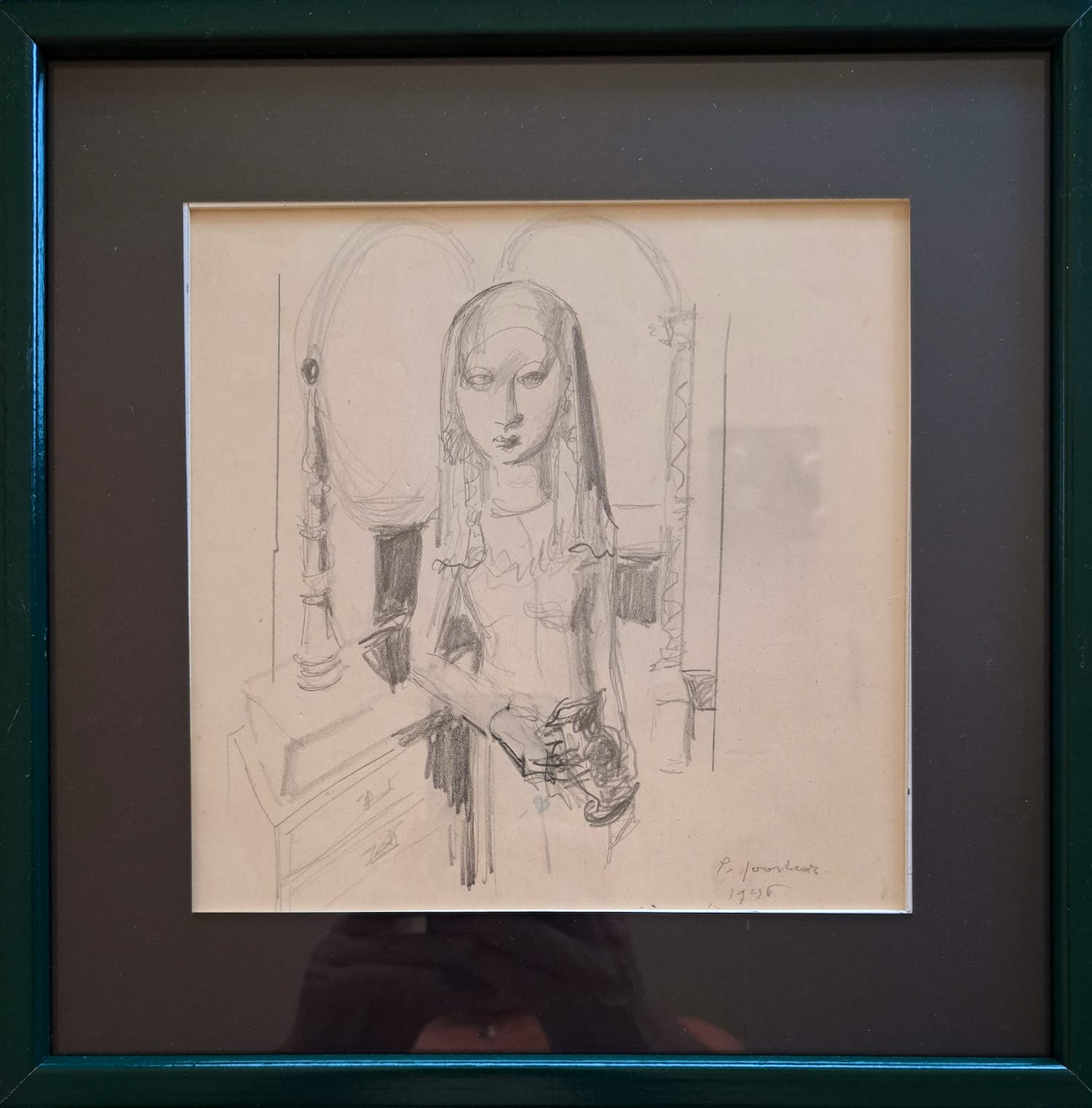
This item has been sold Show item
- Description
- Paul Joostens (1889-1960)
| Type of artwork | Drawing / Aquarelle |
| Year | 1946 |
| Technique | Pencil |
| Support | Paper |
| Style | Expressionist |
| Subject | Figures |
| Framed | Framed |
| Dimensions | 19 x 19.5 cm (h x w) |
| Incl. frame | 29.5 x 29.5 cm (h x w) |
| Signed | Hand signed |
Translated with Google Translate. Original text show .
JOOSTENS Paul (Antwerp 1889 - 1960) Poezeloes for the dressing table 1946 Pencil drawing Signed and dated lower right Drawing dimensions: 19 x 19.5 cm Frame dimensions: 29.5 x 29.5 cm
Paul Joostens was a Belgian artist who was born in Antwerp in 1889 and who died there in 1960. He was a painter, draftsman, designer of collages and assemblages and poet. First apprenticed to the architect M. Winders, later training at the Academy in Antwerp (1909-1913). Initially, until about 1915, he painted in a post-impressionist style, incorporating both Ensorian, 1900 style and Fauvist influences. From 1916 Cubism and Futurism made their appearance. Abstract collages also emerged in this period and from 1920 he realized a series of Dadaist objects, composed of the most diverse materials. A number of satirical-erotic drawings and graphic work were created under the pseudonym Duco Of Malibot. In 1972 he turned his back on modernism and was inspired by the work of the Flemish Primitives. This was followed from about 1930 to 1935 by a religious-mystical period in a cubist-expressionist style. After 1935 his work became more subdued, almost intimate, in lighter colors and he realized a series of photomontages. Just before the Second World War, his work once again exuded a certain symbolic fantasy. After 1946 and until his death, his oeuvre can be divided into two themes. On the one hand Dadaist assemblages and collages, on the other hand the paintings and drawings in which his dream figure of the woman, his 'pussies', play the leading role. From the press: 'In the most important theme, the woman, all of Joostens' dualism is contained: the Madonna and the Platonic glorification of the film diva, the public woman or the girl barely touched by female perversity on the other' and about his work as a writer and poet: 'In 1924 he marries a seventeen-year-old, moves to Paris, travels back and forth: Price, Bruges, but Antwerp remains the stopping place of his heart. In 1928, poverty starts knocking. Divorce followed in 1930. PJ paints and writes. His writings pile up. Also in the period 1930-1960. In Antwerp he moves from one studio to another, suffers poverty, even abject poverty, is physically ill, becomes lonely and falls into total isolation. At his death he left behind an extensive body of work and a mountain of writings. It was his last wish that a fund should be established to enable the publication of his literary work, for in the end he seemed to attach equal importance to his literary and pictorial oeuvre.' (Tijdschrift Vlaanderen, 1971) Sporadically also worked under the pseudonym Jean Yostmans. Work, among others, in the Museums in Antwerp, Brussels, Ostend.
Paul Joostens was a Belgian artist who was born in Antwerp in 1889 and who died there in 1960. He was a painter, draftsman, designer of collages and assemblages and poet. First apprenticed to the architect M. Winders, later training at the Academy in Antwerp (1909-1913). Initially, until about 1915, he painted in a post-impressionist style, incorporating both Ensorian, 1900 style and Fauvist influences. From 1916 Cubism and Futurism made their appearance. Abstract collages also emerged in this period and from 1920 he realized a series of Dadaist objects, composed of the most diverse materials. A number of satirical-erotic drawings and graphic work were created under the pseudonym Duco Of Malibot. In 1972 he turned his back on modernism and was inspired by the work of the Flemish Primitives. This was followed from about 1930 to 1935 by a religious-mystical period in a cubist-expressionist style. After 1935 his work became more subdued, almost intimate, in lighter colors and he realized a series of photomontages. Just before the Second World War, his work once again exuded a certain symbolic fantasy. After 1946 and until his death, his oeuvre can be divided into two themes. On the one hand Dadaist assemblages and collages, on the other hand the paintings and drawings in which his dream figure of the woman, his 'pussies', play the leading role. From the press: 'In the most important theme, the woman, all of Joostens' dualism is contained: the Madonna and the Platonic glorification of the film diva, the public woman or the girl barely touched by female perversity on the other' and about his work as a writer and poet: 'In 1924 he marries a seventeen-year-old, moves to Paris, travels back and forth: Price, Bruges, but Antwerp remains the stopping place of his heart. In 1928, poverty starts knocking. Divorce followed in 1930. PJ paints and writes. His writings pile up. Also in the period 1930-1960. In Antwerp he moves from one studio to another, suffers poverty, even abject poverty, is physically ill, becomes lonely and falls into total isolation. At his death he left behind an extensive body of work and a mountain of writings. It was his last wish that a fund should be established to enable the publication of his literary work, for in the end he seemed to attach equal importance to his literary and pictorial oeuvre.' (Tijdschrift Vlaanderen, 1971) Sporadically also worked under the pseudonym Jean Yostmans. Work, among others, in the Museums in Antwerp, Brussels, Ostend.
| Condition | |||||||||
| Condition | Good | ||||||||
| Typical drawing in good condition | |||||||||
| Shipment | |||||||||
| Pick up | The work can be picked up on location. As a buyer you must bring your own packaging materials. The location is: Sint-eloois-vijve, Belgium | ||||||||
| Shipment | Parcel post | ||||||||
| Price | Up to 10 kg.
| ||||||||
| Guarantee | |||||||||
| Guarantee | By putting the item up for auction, I agree with the Terms of Guarantee as they are applicable at Kunstveiling regarding the accuracy of the description of the item | ||||||||
The seller takes full responsibility for this item. Kunstveiling only provides the platform to facilitate this transaction, which has to be settled directly with the seller. More information .
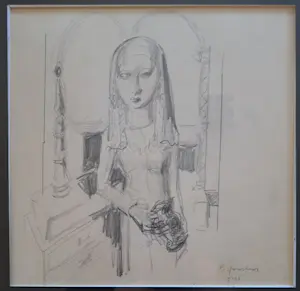
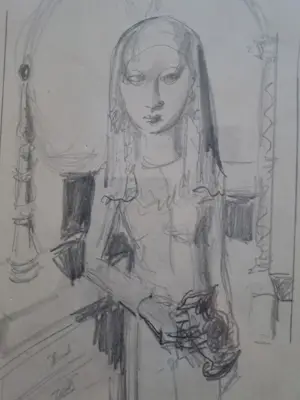
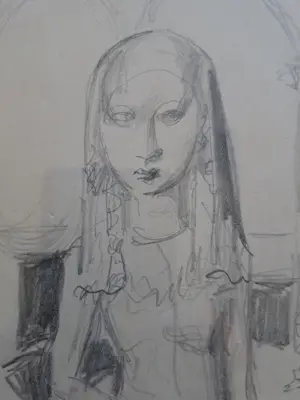
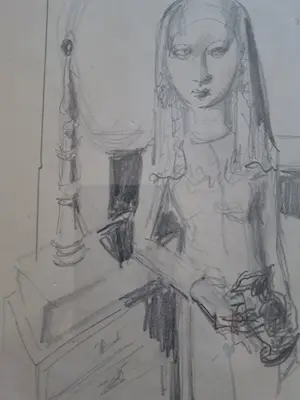

 Belgian
Belgian